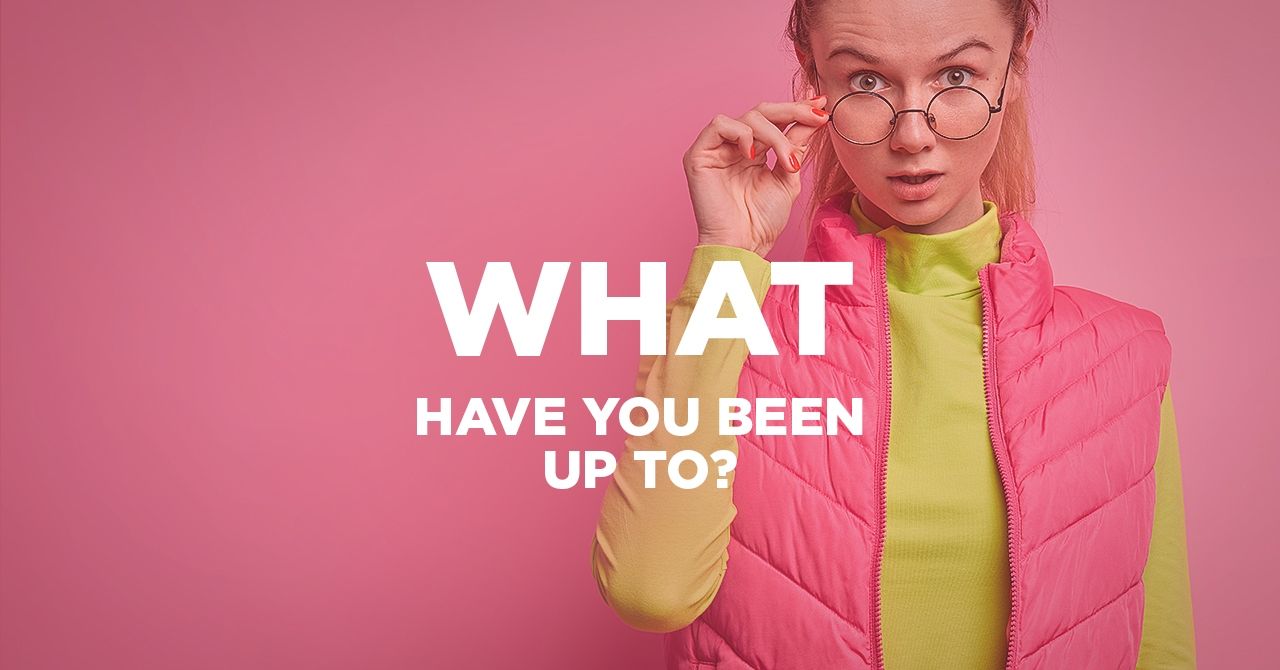
A Guide to Introducing Yourself in English
Like any other language, introducing yourself in English involves much more than just saying your name and where you come from.
Table of contents
- What’s the meaning of self-introduction?
- Here’s what you should know about the basics of self-introduction
- How to introduce yourself in English in a corporate environment
- How to introduce yourself in a casual situation
- Examples of simple introductions in English
- How do you introduce yourself properly in an interview?
- 4 things that make all the difference when introducing yourself
- Get started on the right foot when introducing yourself
- Wrapping up
Introducing yourself in English is more challenging than many people may think it is. It only has some things to do with being fluent in English.
It’s something that even some native English speakers need help with to know how to introduce themselves properly in different situations. Like when meeting with a big client or attending a job interview, for example.
And speaking of interviews, this isn’t one of those moments where you enter a room, say hello, and after mentioning your name, you hope that someone else will take over from there. You start scratching your head, not knowing what to say next.
If you’ve been wondering what’s been missing from your intros, here’s one thing you should remember:
However, doing it with your right hand stretched out in the gesture and your shoulders back sends a completely different impression. Yes. Body language also plays a particular role when introducing yourself. Here’s what we are going to cover today on simple self-introduction in English:
What’s the meaning of self-introduction?
What usually happens first when you meet up with someone for the first time or attend a job interview? Introducing yourself. Right?
We can define it as the act of introducing yourself to strangers and expressing yourself with confidence. Like any other language, introducing yourself in English involves much more than just saying your name and where you come from.
You need to share a little bit more about yourself. I understand just how tricky it can be when introducing yourself to strangers. That’s why I took my time to write and walk you through this interesting self-introduction guide.
Here’s what you should know about the basics of self-introduction
A great self-intro in English is not something you can easily perfect. Introductions often change depending on the circumstances and the audience.
While there are several types of self-introduction people often follow, each type appears to have the same 3 useful elements when done in a professional setting.
- Your name: Your name is one of the most important elements of your self-introduction. While we might already be aware of your identity, mentioning your name is a professional way to start your introduction in English.
- Your occupation: Indicating your role in the company will help people place the right context on your goals as an expert. It’s also a clever way to inform others about your skills and experience.
- Why you are introducing yourself: You may or may not be aware of it yet, but this element varies the most among introductions. It’s crucial to say why you are introducing yourself, even if the purpose might seem obvious. It sends a message of what people should expect from you.
Want to practice your self-introduction in English to sound natural?
Choose any native-English-speaking-tutor on LiveXP and practice speaking & introducing yourself online in 1-on-1 lessons.
How to introduce yourself in English in a corporate environment
When introducing yourself in a corporate environment, the difference between a great intro and a terrible one could end up being hundreds of dollars in a business deal or profitable employment.
Although much may depend on it, you can easily navigate self-intros once you master the right approach. To get the best results, check out the below tips and advice to help you improve your introduction in English.
Say more than your name and a title
It’s quite OK to begin a self-introduction with your name and title. But even though it’s fine, your title doesn’t often communicate other important areas of your story.
For instance, if you tell someone that you are the marketing manager at your company, it will only paint a simple picture of you.
But if you add a little bit more information to it. Adding something more or less like, “I run high-level campaigns for the brand’s highest-paying customers,” automatically highlights your important roles and the value you bring to the company.
Moreover, sharing your contributions to the growth of the brand you work for gives you a lot of credit. It tells people just why it’s important to make a connection with someone like you. The thing is, when you point out the values you bring to a company, the people you’re talking to will be more likely to pay attention.
Keep it relevant
It’s quite easy to get carried away and go completely off-topic, sharing more details about your life than people need to know. Things that are somehow not even relevant to the specific situation.
Therefore, always ensure to stay as close to the topic as possible when introducing yourself in English. At a job interview, for example, it’s only necessary to share relevant details about you that your interviewer would want to know.
Yes, it is fine to talk about yourself. Your family. Interests. Hobbies. Et cetera. But also talk about your qualifications, achievements, and what makes you a good fit and the most suitable candidate for the job.
Speak slowly
Rushing when introducing yourself can make people miss some important details about you that you want them to know.
Instead of listening to you rush through every detail of your life, I’d rather hear you speak well and clearly about what makes you so you. Therefore, be sure to slow down the speed when introducing yourself in English and highlight the most important facts about your life.
How to introduce yourself in a casual situation
Only some situations or environments where you introduce yourself will be a corporate setting. That means you will need a different introduction approach in a casual setting.
This could be when you are passing by a conference or while on vacation. Or if, let’s say, you travel or move to a new place. It could be anything outside of a corporate environment or your professional life. And even though you still need to show confidence and poise, you would also want to:
Use humor appropriately
In a casual introduction, humor always wins the moment. It helps you lighten the mood and set your audience at ease. And if, let’s say, you are a funny guy, a joke can create a pleasant environment as long as it doesn’t go too far.
Keep in mind that any use of humor should be relevant to the topic and suitably light. Also, remember that you are introducing yourself to new people, so you should only bring a positive vibe with your humor.
Keep your intros short and compelling
Introductions should be brief, compelling, and last at least 30 seconds or less. Whether you just met a new friend or are introducing yourself in a meeting, you should always aim to get to the point quickly.
You should also avoid talking in circles or, in other words, beating around the bush. Remember that the people you’re talking to only need a summary of your life.
Examples of simple introductions in English
Pay attention to the following examples or ideas to learn how you could approach different introduction situations.
Example №1
Hello, I’m Ronny Okumu. As the marketing manager of the [company name], I run campaigns for our enterprise customers. Our marketing efforts have seen our top clients double their sales in just 7 months. I am thrilled to explore a collaboration with your brand so you can also experience the same results.
Example №2
Hi, I’m [insert your name], the CTO for SchoolUpgrade Inc. Have you heard of the new education management software most schools are now using? I was head of the team that designed and developed the smart program.
Example №3
Good morning, sir (or their first name). My name is Ronny Okumu. I’m a technical SEO specialist at XYZ Company. I regularly share tips and advice for high organic search and site rankings. How would you like to discuss business?
How do you introduce yourself properly in an interview?
Usually, when an interviewer asks, “Tell me about yourself,” it is to know about you in brief. Afterward, they will likely follow up with questions related to the role.
With that said, note that the first impression is often the only impression. Once you get your self-introduction right or happen to answer the routine HR interview questions before the interview, you’ve earned yourself some extra shiny points.
Key points:
Keep these key pointers in mind and remember to mention them with confidence when doing a self-introduction during an interview:
- When the interviewer asks who you are, say your name slowly but just loud enough so they get it right. Follow with where you come from, some personal background, and a little bit about your experiences and hobbies.
- Follow with your academic qualifications or what you may be studying that is relevant to the job description.
- Focus as much as possible on your work, previous experience, achievements, internship, and other things related to the interview.
- Feel free to add any other professional training or experience you may have as you see fit.
Here’s an example of a great self-intro in English at an interview
Thanks for the opportunity and the warm welcome, sir. I’m so excited to finally meet you! My name is Ronny Okumu. I’m a creative writer and SEO expert with 7 years of professional experience.
In my previous role at XYZ brand, I developed high-quality, user-friendly content that helped the company’s website rank high on Google. This led to us achieving an increase of 22% in sales growth compared to the previous year.
Notice the way I started my intro instead of saying hi, mentioning my name, and proceeding to other details? That’s just one way you can use humor to create a comfortable environment when introducing yourself in a job interview.
You may also start by saying “hello,” “hi,” “good morning,” or “good afternoon, sir,” and then follow with your brief yet strong introduction. It all depends on your experience and how often you practice your introductions.
Here’s another simple example of self-introduction
Hello sir. My name is Ronny Okumu. I’m a recent graduate from the Training & Central Registry section at JKUAT University. The very same place I completed my degree in Human Resource Management.
I’ve been working there as an intern staff trainer for six months. I have also completed another internship at the BREAD and BUTTER company, Inc. I was so excited to hear about this XYZ opportunity in your company, and I’m confident that I’ll bring real value to your business.
Use this kind of approach in an interview or when writing your cover letter, and you’ll be surprised at the kind of feedback you’ll get.
4 things that make all the difference when introducing yourself
If you have a place to write, now is the time to highlight some points on how to ace a self-intro in English in a corporate setting.
Body language, which is our main focus here, helps a lot when introducing yourself to strangers. It is something you can use to your full advantage, no matter the level of your English-speaking skills.
It is important to understand what your gestures, facial expressions, and posture are saying about you. And, of course, how you can use them to your advantage. Here are some things you can do when introducing yourself in any situation:
Standing upright
Standing or sitting upright shows that you are comfortable and prepared for a conversation. You can use this body language to look more confident than you actually are. After all, confident and ready are what you want to be when introducing yourself to strangers.
A firm handshake
A firm, friendly handshake is also one of the most common ways to greet somebody anywhere, anytime. You can practice this body language with anyone you meet, no matter their social status or gender. It’s actually a great way to start an introduction in any kind of situation.
Smiling when introducing yourself
Smiling during self-introduction sends a signal of humor, which will likely make you a more enchanting conversation partner. Use it to your benefit to create a welcoming environment when introducing yourself in English.
Maintaining eye contact
Maintaining eye contact when talking to people is often considered a sign of honesty and trustworthiness in many parts of the world. Personally, I also prefer listening to people who are not afraid to look me in the eyes rather than those who would rather look down or sideways.
Additionally, maintaining eye contact also shows that you are interested in and paying attention to the discussion. But be careful not to overdo it, as it might make you look “creepy” when you keep your eyes locked on someone’s eyes for a long time. It’s OK to blink or look away from time to time.
Get started on the right foot when introducing yourself
We both know that there is no such thing as making a second first impression when introducing yourself to strangers. You have to get it right from the start, especially if you are in a job interview.
If focusing on the particular structure of an introduction seems a bit hard for you, just make an effort to practice a simple introduction approach that works for you. If you are confident with your English skills, you can take a minute or two to practice introductions before you head out to an important meeting or event.
But if you doubt your English-speaking skills, you could opt for conversation lessons with an experienced LiveXP English tutor. After all, practice and confidence make all the difference when it comes to introducing yourself to strangers.
Wrapping up
Knowing how to deliver a great self-intro in English is very helpful, especially when you move to a new location or neighborhood. You never know when you might need to do a self-introduction in English.
Therefore, I’d advise that you take some time to go through the tips on this page and practice as much as you can. And if you need help learning how to introduce yourself in English, LiveXP is the place to find great English tutors and conversation partners who will help you tackle any challenges you may have.
Take advantage of 1-on-1 lessons on LiveXP and prepare for your next great introduction. Make that great first impression every time you introduce yourself to a stranger.
I'm Ronny Okumu with over 7 years of professional writing. Learning new things is something I truly enjoy. And if I meet a new topic, I just spend some time researching until I can write about it.

